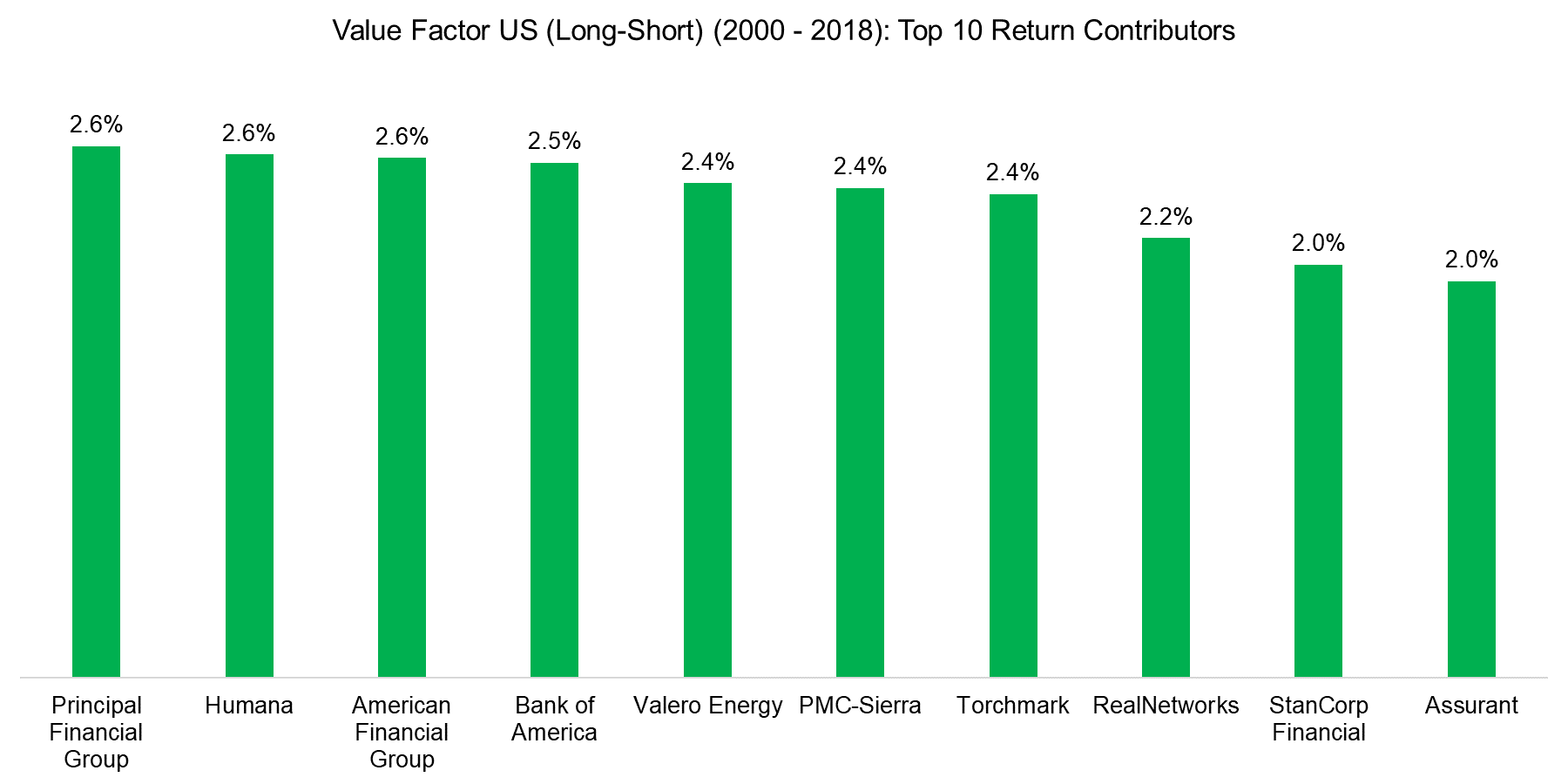Impact of Single Stocks on Factor Returns
Do Single Stocks Matter for Factor Investors?
July 2018. Reading Time: 10 Minutes. Author: Nicolas Rabener.
SUMMARY
- Factor portfolios are typically created by equal weighting stocks
- The impact of single stocks is therefore reduced compared to market-cap weighted indices
- The FAANG stocks impacted factors differently
INTRODUCTION
The famous FAANG quintet of Facebook, Amazon, Apple, Netflix, and Google has driven much of the performance of the Nasdaq 100 in 2018 and currently accounts for approximately 35% of the index.
Such a large contribution from a handful of stocks might seem extreme, but a select few stocks have historically accounted for a disproportionate share of stock market returns. Although it may seem counterintuitive, most stocks underperform their index because of the non-normal distribution of stock returns and the nature of market capitalization indexation, which rewards winners and punishes losers.
Factor portfolios are less affected by single stocks since they are usually constructed equal weight. Nevertheless, the relationship is worth exploring. Using the Value factor as a case study, how do single stocks influence factor returns? And how do the FAANG stocks influence six common equity factors?
IMPACT OF SINGLE STOCKS ON THE VALUE FACTOR IN THE US
We define the Value factor as buying cheap and selling expensive stocks as determined by a combination of price-to-book and price-to-earnings ratios. The portfolio is constructed beta-neutral and selects the top and bottom 10% of stocks with a US market capitalization of over $1 billion This results in a diversified portfolio of approximately 170 stocks each on the long and short sides.
Since the positions are equally weighted, single stocks should have a limited influence. The following chart highlights the 10 stocks that contributed most to positive Value factor performance in the United States from 2000 to 2018. These equities represent a diverse array of industries, with a tilt toward the financial sector (read Value Factor: Improving the Tax Efficiency).

Source: FactorResearch
The stocks that most negatively influenced Value factor performance skewed toward technology companies. Amazon and Netflix stock, for example, has been expensive for years and so were featured in the short portfolio. But since they generated strong stock returns, they dragged down factor performance (read Value Factor – Intra vs Cross-Sector).

Source: FactorResearch
The top and bottom 10 contributors are not necessarily the cheapest or most expensive companies. Rather, they are those with the largest influence on factor performance, either positive or negative. Investors therefore could have not avoided these stocks and their contribution only becomes obvious in hindsight.
That said, with perfect foresight, we could exclude these 20 stocks. The chart below demonstrates the results: Removing those stocks would have a marginal effect on the performance of the long-short Value factor.

Source: FactorResearch
The reason for the lack of impact on the factor performance? The Value factor portfolio traded 2386 stocks from 2000 to 2018, so 20 stocks, especially given the equal weighting, have only a small influence overall.
The chart below shows the return contribution of all equities. It looks roughly symmetrical. Excluding the top and bottom 10 may remove the extreme outliers but effectively nets them. Therefore, it should have no significant influence on factor performance. The maximum positive distribution to the factor performance was below 3% while the most negative contributions were below -4%.

Source: FactorResearch
IMPACT OF FAANG STOCKS ON US FACTOR RETURNS
Three of the five FAANG stocks only had their initial public offering (IPOs) over the last two decades, which makes their impact on stock markets and the world all the more remarkable.
Their effect on common equity factors is not negligible either, as the chart below demonstrates. These factors are created via beta-neutral long-short portfolios based on the top and bottom 10% of the US stock markets. The factor definitions are in line with academic and industry standards.
Investors may expect FAANG stocks to demonstrate certain qualities: to be expensive and to outperform, to feature large market caps, high quality, strong growth, and to pay no dividends. Interestingly, the performance of the factor portfolios that excluded these five stocks reflects these company characteristics. Excluding the FAANG stocks was positive for the Value, Size, and Dividend Yield factors as they were featured in the short portfolios and negative for the Momentum, Quality and Growth factors as they were featured in the long portfolios.
The impact on the factor performance was larger than removing the top and bottom 10 stocks as the FAANG stocks were either in the top or bottom portfolios, depending on the factor.

Source: FactorResearch
FURTHER THOUGHTS
Factor investors face many issues, that of factor selection, among them, so it is somewhat comforting that the common approach to equal weight stocks in factor portfolios limits the impact of single stocks, which is one less risk to be concerned about.
Naturally, the FAANG stocks had a significant influence, but it is impossible to predict what stock will follow the path of the FAANG stocks. Considering removing certain stocks is therefore a somewhat theoretical discussion, unfortunately like many discussions about factor investing.
ABOUT THE AUTHOR
Nicolas Rabener is the CEO & Founder of Finominal, which empowers professional investors with data, technology, and research insights to improve their investment outcomes. Previously he created Jackdaw Capital, an award-winning quantitative hedge fund. Before that Nicolas worked at GIC and Citigroup in London and New York. Nicolas holds a Master of Finance from HHL Leipzig Graduate School of Management, is a CAIA charter holder, and enjoys endurance sports (Ironman & 100km Ultramarathon).
Connect with me on LinkedIn or X.

